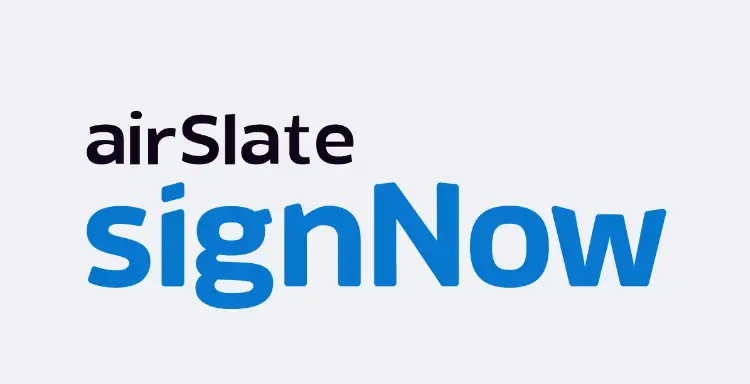
The real estate industry, traditionally reliant on mountains of paperwork and manual processes, has embraced electronic signatures (e-signatures) to streamline transactions and enhance efficiency. E-signatures offer a convenient, secure, and legally binding way to sign real estate documents, from purchase agreements to lease contracts. This guide will explore how electronic signatures are transforming real estate transactions and provide practical steps for their implementation.
Benefits of Electronic Signatures in Real Estate
1. Efficiency and Speed
E-signatures significantly reduce the time needed to complete real estate transactions. Parties can sign documents from anywhere, eliminating the need for in-person meetings and speeding up the process.
2. Convenience
Buyers, sellers, and agents can sign documents electronically at their convenience, whether they are at home, in the office, or on the go. This flexibility is particularly beneficial for transactions involving out-of-town or international parties.
3. Security
Electronic signature platforms use advanced security measures, such as encryption and authentication, to ensure the integrity and authenticity of signed documents.
4. Legality
E-signatures are legally binding and recognized under federal laws (ESIGN Act and UETA) and many state laws, assuring that electronically signed documents are valid and enforceable.
5. Environmental Impact
By reducing the need for paper documents, e-signatures contribute to environmental sustainability, helping to minimize the carbon footprint of real estate transactions.
Common Real Estate Documents for E-Signatures
1. Purchase Agreements
The purchase agreement, or sales contract, is one of the most critical documents in a real estate transaction. E-signatures expedite the signing process, allowing for quicker contract finalization.
2. Lease Agreements
Landlords and tenants can sign lease agreements electronically, streamlining the rental process and reducing the need for physical paperwork.
3. Disclosure Forms
Various disclosure forms, such as property condition disclosures, can be signed electronically, ensuring that all required information is communicated and acknowledged promptly.
4. Financing Documents
Mortgage applications, loan agreements, and other financing documents can be signed electronically, facilitating faster approval and processing times.
5. Inspection Reports
Home inspection reports and related documents can be signed electronically, ensuring timely completion and communication of findings.

Best eSignature service
How to Implement Electronic Signatures in Real Estate Transactions
Step 1: Choose a Reliable E-Signature Platform
Select a reputable e-signature platform that offers the features and security needed for real estate transactions. Popular options include:
- DocuSign: Widely used in the real estate industry for its robust features and compliance with legal standards.
- Adobe Sign: Another leading platform known for its ease of use and integration with other Adobe products.
- SignNow: Offers a straightforward solution with essential features for real estate transactions.
Step 2: Prepare Your Documents
- Upload Documents: Upload the necessary documents to the chosen e-signature platform.
- Add Signature Fields: Use the platform’s tools to add signature fields, date fields, and any other required fields to the documents.
Step 3: Authenticate Signers
Ensuring the identity of all signers is a crucial step in the e-signature process. Here’s how to do it:
- Email Verification: Most e-signature platforms send an email to each signer with a unique link to the document.
- Knowledge-Based Authentication (KBA): Some platforms offer KBA, where signers must answer personal questions to verify their identity.
- Multi-Factor Authentication (MFA): Implementing MFA adds an extra layer of security by requiring signers to enter a code sent to their phone or email.
Step 4: Sign the Documents
- Send for Signature: Once your document is prepared and signers authenticated, send the document to all parties for their electronic signatures.
- Sign Online: Each party receives an email with a link to the document. They can review and sign it online using their mouse, finger, or a typed signature.
- Automatic Reminders: Set up automatic reminders to prompt signers to complete their part if they haven’t done so within a specified timeframe.
Step 5: Finalize and Store the Documents
- Document Completion: After all parties have signed, the document is finalized and stored securely on the e-signature platform.
- Audit Trail: Ensure an audit trail is maintained, capturing details like who signed, when they signed, and any IP addresses involved. This is crucial for legal and compliance purposes.
- Download and Share: Download a copy of the signed document for your records and share it with all relevant parties.

Best eSignature service
Legal Considerations
1. Compliance with the ESIGN Act and UETA
Ensure that your use of electronic signatures complies with the ESIGN Act and UETA, which provide the legal framework for electronic signatures in the U.S.
2. State-Specific Laws
Some states may have additional requirements or restrictions on the use of electronic signatures in real estate transactions. Always check state-specific laws and regulations to ensure compliance.
3. International Transactions
For international real estate transactions, be aware of the e-signature laws in the relevant countries. Different jurisdictions may have varying standards and requirements for electronic signatures.
Best Practices for Using Electronic Signatures in Real Estate
1. Clear Communication
Communicate the e-signature process to all parties involved. Provide instructions on how to access and sign the documents electronically.
2. Training
Ensure that all real estate agents and staff are trained on using the e-signature platform effectively. Familiarity with the tool can prevent errors and streamline the process.
3. Secure Access
Use secure methods to access and sign documents. Avoid using public or unsecured Wi-Fi networks when handling sensitive information.
4. Consistent Documentation
Keep consistent records of all transactions. Store all signed documents securely and maintain an organized system for easy retrieval.
5. Regular Updates
Stay updated on any changes to e-signature laws and technology. Regularly review and update your e-signature processes to ensure compliance and efficiency.
Conclusion
Electronic signatures have become a vital tool in modern real estate transactions, offering unparalleled convenience, security, and efficiency. By understanding the benefits and legal considerations, and following best practices, real estate professionals can effectively integrate e-signatures into their workflows. This not only enhances the transaction experience for clients but also streamlines operations, making the entire process faster and more reliable.
FAQ Section
1. Are electronic signatures legally binding in real estate transactions?
Yes, electronic signatures are legally binding in real estate transactions, provided they comply with federal and state laws.
2. Can electronic signatures be used for all types of real estate documents?
Most real estate documents can be signed electronically, but some specific documents may require traditional signatures depending on state laws. Always verify the requirements for your specific transaction.
3. How can I ensure the security of electronically signed real estate documents?
Use a reputable e-signature platform with strong security measures, such as encryption and multi-factor authentication, and ensure that an audit trail is maintained for all signed documents.
4. Do electronic signatures comply with the ESIGN Act and UETA?
Yes, electronic signatures that meet the requirements of the ESIGN Act and UETA are legally valid and enforceable.
5. What are the best e-signature platforms for real estate transactions?
Popular e-signature platforms for real estate transactions include DocuSign, Adobe Sign, and SignNow, each offering robust features and compliance with legal standards.
By leveraging electronic signatures, real estate professionals can provide a seamless, efficient, and secure signing experience, benefiting both clients and agents in the fast-paced world of real estate.
